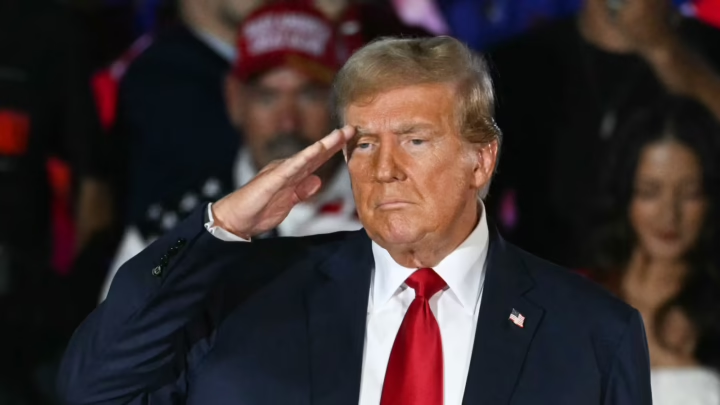Donald Trump to Kick Transgender Troops Out of US Military: A Strategic Move
Donald Trump to Kick Transgender Troops Out of US Military: A Strategic Move

As President-elect Donald Trump prepares to take office, one of his first executive actions is expected to be the removal of transgender service members from the US military. This decision, set to be implemented on January 20, 2025, aims to address various concerns related to military readiness, cohesion, and effectiveness. In this article, we will explore the strategic reasoning behind this move and its potential impacts on the armed forces.
Background and Context
During his first term, Trump announced a ban on transgender individuals serving in the military, citing concerns over medical costs and potential disruptions. This ban took effect in 2019 but was later reversed by President Joe Biden. Now, Trump plans to reinstate and expand this policy, medically discharging thousands of currently serving transgender troops.
The decision is part of a broader agenda to eliminate what Trump and his supporters view as “woke” policies within the military. By focusing on traditional military values and priorities, the administration aims to enhance the overall effectiveness and readiness of the armed forces.
Strategic Reasoning
The primary rationale behind this move is to ensure that the military remains focused on its core mission: defending the nation. Proponents argue that the inclusion of transgender individuals in the military introduces complexities that can detract from this mission. These complexities include medical dependencies, potential deployment limitations, and the need for specialized accommodations.
By removing these perceived obstacles, the administration believes that the military can operate more efficiently and cohesively. This approach is seen as a way to streamline operations and reduce administrative burdens, ultimately leading to a more effective fighting force.
Impacts on Military Readiness
One of the key arguments in favor of this policy is its potential to enhance military readiness. The removal of transgender troops is expected to address recruitment and retention challenges by creating a more straightforward and focused environment for service members. This move is also anticipated to improve unit cohesion, as all members will be subject to the same standards and expectations.
Additionally, the policy aims to reduce medical and logistical complications associated with accommodating transgender individuals. By eliminating these factors, the military can allocate resources more efficiently and ensure that all service members are fully deployable and ready for combat.
Financial Considerations
The financial implications of this policy are also significant. The Department of Defense has spent millions of dollars on medical treatments and surgeries for transgender troops. By discontinuing these expenditures, the administration aims to redirect funds towards other critical areas of military operations and readiness.
This reallocation of resources is expected to enhance the overall effectiveness of the military, allowing for investments in training, equipment, and other essential components of national defense.
Challenges and Criticisms
Despite the strategic reasoning behind this policy, it has faced significant criticism from various quarters. Critics argue that the removal of transgender troops undermines the principles of equality and inclusivity. They also contend that the policy could lead to a loss of valuable experience and leadership within the military.
Furthermore, some experts warn that the policy could exacerbate recruitment and retention challenges, particularly at a time when the military is already struggling to meet its targets. The abrupt discharge of thousands of service members could create gaps in critical skills and expertise, potentially impacting the overall effectiveness of the armed forces.
Looking Ahead
As Trump prepares to implement this policy, the military and the nation will need to navigate the complexities and challenges that come with such a significant change. The administration’s focus on traditional military values and priorities is expected to shape the future direction of the armed forces.
While the policy aims to enhance military readiness and effectiveness, it will be essential to monitor its impacts and address any unintended consequences. The success of this approach will depend on the ability of the military to adapt and maintain its commitment to defending the nation.
Conclusion
The decision to remove transgender troops from the US military is a strategic move aimed at enhancing readiness, cohesion, and effectiveness. By addressing perceived complexities and reallocating resources, the administration seeks to create a more focused and efficient fighting force. As the policy is implemented, it will be crucial to monitor its impacts and ensure that the military remains capable of fulfilling its core mission of national defense.
Stay tuned for more updates and insights on this policy and its implications for the US military and national security.



0 Comment